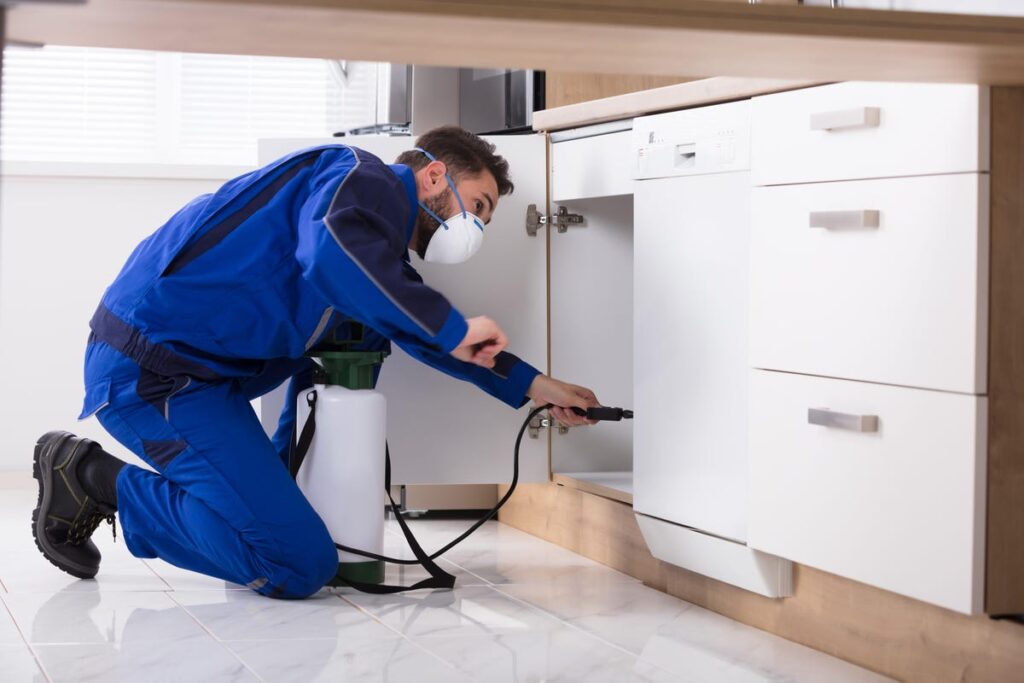To prevent pests from destroying your property, you must learn about their needs and habits. Pests can cause damage to people, animals, and even buildings, so it is important to identify the kind of damage they can cause and take action against them. Before choosing the right method of pest control, you should conduct research to determine whether action is necessary and which type of treatment to use. Depending on the level of pest infestation on your property, you may decide to use traps, pesticides, or a combination of these methods. also, contact Australia’s best pest control company for a pest inspection.
Identifying pests
Identifying pests for pest control starts with knowing what species they are. Pests come in all shapes, sizes, and life cycles. They can damage vegetation and interfere with landscaping. Additionally, some pests pose health risks, as they may transmit disease, or even damage water quality. To avoid these risks, it is important to learn how to identify pests so that the appropriate pest control tactics can be used. However, identifying pests is not always easy. Here are some helpful tips to help you identify different species.
Identifying pests for home use requires a few steps. Using a pest identification guide is important because it will give you the information you need to properly remove the pest. It’s crucial to identify the species before you start a pest control project. The right identification guide will provide you with important information, such as the species’ biology and appropriate pest control methods. By following these steps, you will be on your way to identifying pests in your home and getting rid of them for good.
Using pesticides
Using pesticides for the control of insects is not new. In fact, it has been done for centuries. Pesticides are a highly effective and popular method of controlling insects. The downside of using them is that they can kill beneficial soil organisms and insects. Not only can pesticides kill off non-target plants, but they can also cause harm to wildlife, fish, and birds. The herbicide trifluralin, the active ingredient in weed-killer Snapshot, is highly toxic to fish and cold-water species. Contact, atpmspest.com.au or pesticides control near me for pest control services they are the best pest control company in Australia.
Many types of pesticides have different toxicity levels. Toxicity levels are usually determined by LD50, which measures the concentration of a material required to kill 50 per cent of a lab animal. The lower the number, the less toxic it is. A single milligram of a chemical can kill 20 animals, while 10 milligrams kill the same number. Generally, chemicals that have higher toxicity levels are classified as “Low-Toxicity” and those with lower values are “High-Toxicity” pesticides.
Using cultural control
Using cultural controls for pest control has many advantages, but it is important to note that they do not provide a cure-all for the problem. These methods involve the use of techniques that are not always practical in many contexts, including those involving soil conservation, production efficiency, and yields. For example, some of these techniques may cause soil erosion or other undesirable effects if they are not used properly. However, cultural control is a good option for farmers who wish to minimize their impact on the environment. Find the best pest control near me for cultural control.
For agricultural pest management, government and industry should develop a clear food and agriculture policy that acknowledges the primary role of the food system and the importance of preserving the earth’s capacity to provide food for human beings. Such a policy should also identify the most appropriate strategies for managing agriculture pests. A committee can be established to discuss the importance of cultural methods for pest control. This committee should include representatives from government departments, the private sector, and research.
Using traps
If you’re battling a burgeoning beetle infestation, you might consider using traps to eliminate it. These small devices are easy to set and can be used in conjunction with bait, allowing you to trap a variety of different pest species at one time. Traps are placed four to five feet above the ground and should be far away from human activity. If you’re attempting to trap both flying moths and crawling beetles, be sure to use specialized bait.
Sticky traps are an inexpensive and effective way to monitor insects. Plastic or card pieces covered in a clear adhesive substance act as bait, attracting the insects and luring them into the trap. These traps should be checked regularly during the growing season and replaced when the sticky material is no longer effective. Sticky traps should also be placed near vents and doors to keep pests away from sensitive crops. A sticky trap is an essential part of any integrated pest management program, so it’s important to keep track of it.
Using poison
Using poison for pest control can be a dangerous practice because it affects not only the target animal but also nearby nontarget animals such as roof rats and squirrels. If you want to use poison for pest control, you must first learn more about the safety hazards involved in its use. Poison has many risks, including the harm it causes to non-target animals, as well as its lack of efficacy. If you have questions, ask a professional.
To use poison effectively, follow label directions and store the poison properly. Always store it away from food, water, and pets. Be sure to read the instructions on the label and wear protective gear. Always remember to wash your hands thoroughly after using poison. You should also ensure that the containers are sealed and not reused. Lastly, you should clean up the area as soon as possible. After you use the poison, you should dispose of it properly. Using poison is dangerous for children, so you should use it only when you are certain that it is not necessary.

